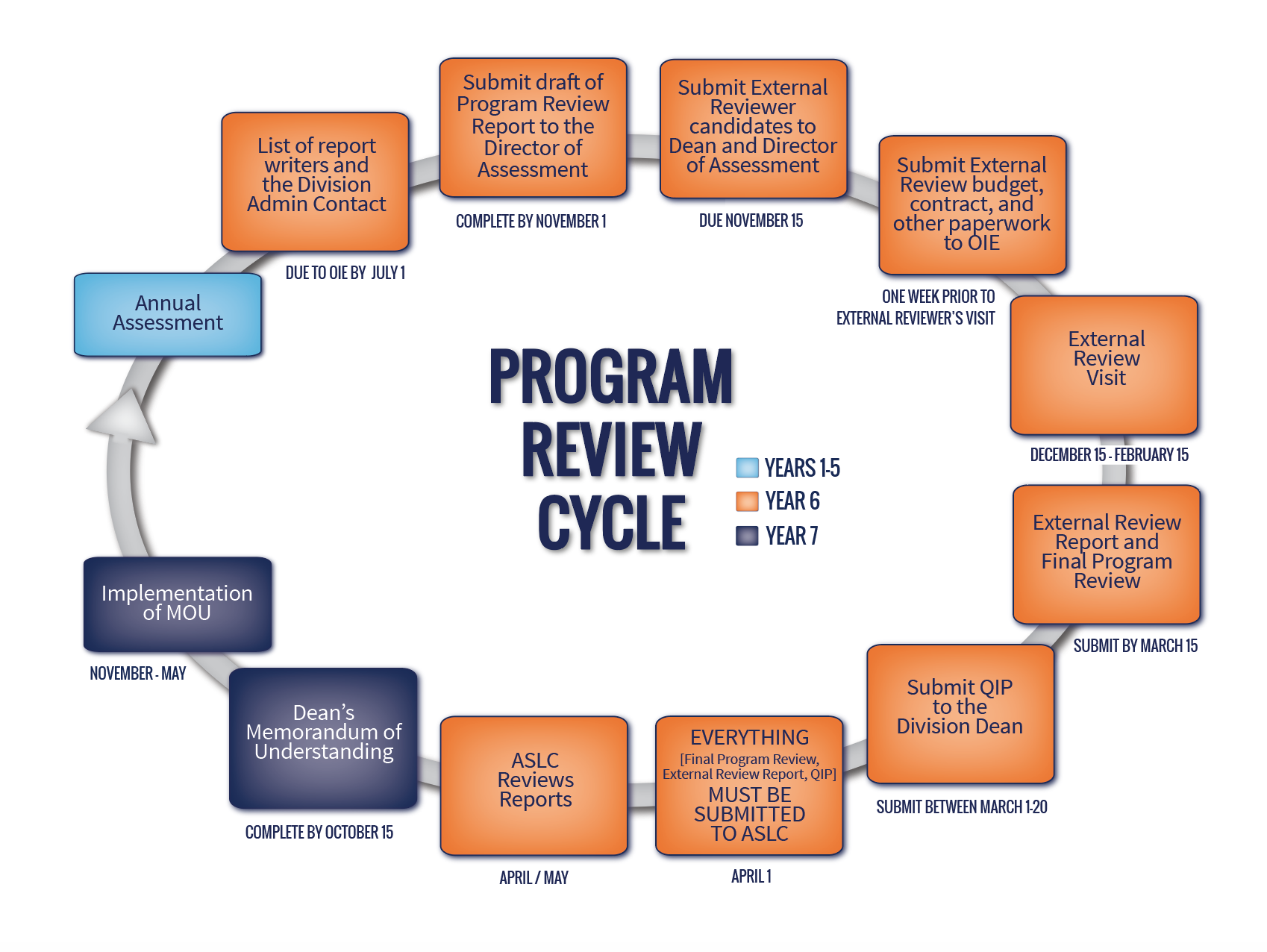Program Review
Program review is a systematic process that occurs every five-to-seven years in order to evaluate and improve academic programs. Program Reviews have several sections that include: background and meaning of the degree, quality of the program, data to support the viability of the program, assessment results from the past five years, and a quality improvement plan. The report, which the process provides, is also reviewed by an external reviewer and by the Advancement of Student Learning Council (ASLC) as an internal reviewer. The ASLC provides feedback which the programs use to draft a Memorandum of Understanding (MOU) which could include curriculum and programmatic changes and informs planning and budgeting processes at various levels. Program Review is a required practice for accreditation and speaks to the quality and integrity of programs, as one of the criteria for review for WASC Senior College and University Commission reaffirmation. Program reviews have been a part of Pepperdine's assessment cycle since 2003. OIE supports program reviews and serves as the repository for five-to-seven-year reviews. Program reviews would be the foundational source for substantive program changes. Read more in OIE's Program Review Guidebook. (Also, see below for more about ASLC.)
For more information click on the following:
- Program Review Guidebook for Academic Departments
- ASLC Rubric for Academic Program Review
- Program Review Guidebook for Student Affairs and other Non-Academic Departments
- ASLC Rubric for Non-Academic Program Review
- Assessment & Program Review Reporting Flow Chart Information
- Did you know the OIE has funds to help through program review?
Schedules and Archive
Advancement of Student Learning Council (ASLC)
The Advancement of Student Learning Council (ASLC) was developed to instill and sustain
a culture of systematic student learning assessment in all quarters of the University.
The ASLC serves as the internal review board of program reviews and offers programs
undergoing 5-year program reviews with feedback on the quality of their critical inquiry
process and use of evidence to support their program improvement plan.
- Learn more about the ASLC on their website!
- The OIE/ASLC Comparison infographic details some of the key differences between the OIE and the ASLC regarding their roles in assessment and program review.
- Each year, the ASLC compiles Flash Reports of themes identified in their review of program review reports.
Cycle
